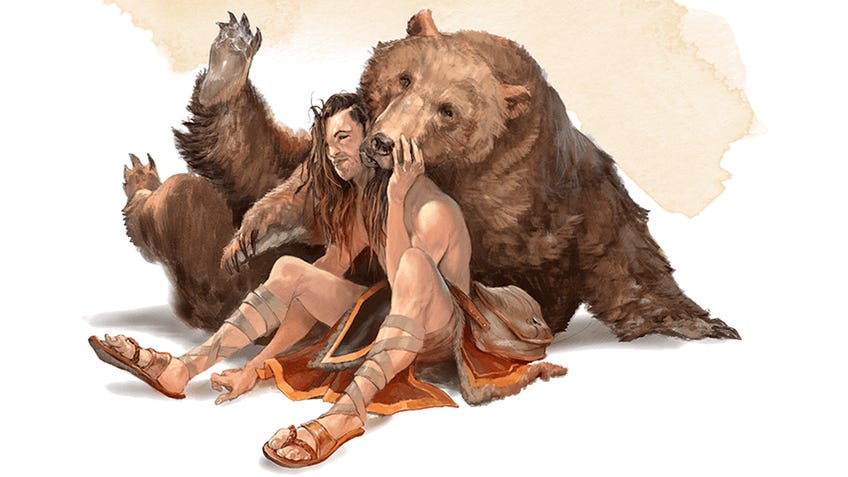Dungeons & Dragons players torn on playtest Druid and Wild Shape because history is cyclical
Unclear if these are the same players who don’t want paladins smiting from across the room.
Wizards of the Coast has once again sat two senior designers in front of a camera to address the latest feedback from its ongoing playtest of Dungeons & Dragons’ future form. Todd Kenrick and rules guru Jeremy Crawford discussed what players thought about proposed changes to the Druid and Paladin classes, which included holy punches and polarising opinions on the Wild Shape ability.
It’s worth noting up top that everything discussed in the document and feedback form are meant to be rough drafts, experiments and iterative design. Crawford explicitly mentioned in the video on D&D’s official YouTube channel that designers often test ideas they know will cause a stir simply to foment useful and interesting discussion. Such was the case with changes to the Druid’s Wild Shape ability, which swapped the menagerie of options from the Monster Manual with generic stat blocks with abilities and scores derived from the character’s ability scores and proficiency bonus.
According to Crawford, players were anything but lukewarm on the proposed changes. Reports summarising the feedback reportedly claimed one group said “this is their favourite version of Wild Shape they've ever seen. This is paired with people in contrast who said they never want this version of Wild Shape to appear in print.”
As the senior designer mentions in the video, D&D’s creators have proposed these changes in the past, specifically during D&D Next's playtest period a decade ago, and received similar complaints. Why try again? Crawford said a general survey conducted in 2021 hinted that D&D’s changing playerbase, expanded exponentially by the tabletop RPG's explodion in popularity, might now be amenable to a more user-friendly version of Wild Shape.
New players who choose Druid must currently memorise or catalogue all of the myriad creatures their level and subclass allow them to transform into, an onerous task that can feel like bookkeeping at the table. Generic tables would offload much of the mental drudgery at the cost of flavour, and whether that trade sounds fair will likely come down to the individual.
Beyond the “simple majority” of respondents who did not care for the proposed Wild Shape, most of the changes to the Druid and its Circle of the Moon subclass found a lot of support. Channel Nature sounded promising, if not fully explored, and players urged the designers to dig deeper into the lunar presentation of the one playtested circle.
As for Paladins, Crawford said the floor for positive feedback was unusually high. Folks loved the changes to Smite, especially the ability to use a good ol’ fashioned knuckle sandwich to deliver righteous fury. Less loved was a change that would allow Paladins to use Smite at a range, claiming it undermined the holy warrior’s history as a melee-dependent class.
Crawford’s statement that “the past is prologue” rings especially true during the continued rounds of playtesting, and the designers seem as though they’ve learned how to read player sentiment like sticking a wet finger into the wind. Whether you believe crowdsourced game design is the best way to create a dynamic and interesting tabletop RPG, it continues to be an interesting exercise in how much change D&D’s fans can actually stomach.










